In today's world, people rely heavily on the Internet for communication. Social media platforms like Instagram have changed how we connect with each other. Building an app like Instagram can be exciting and will let you tap into the growing demand for visual content and community building.
This article will guide you through the essential steps to create a fully functional photo-sharing app. You'll learn how to develop an app like Instagram, including its key features, while also adding your unique touch.
According to Statista, Cristiano Ronaldo's Instagram account is one of the most popular as of April 2024. With 628 million followers, the Portuguese football player is the most popular user on the photo-sharing app platform. However, Instagram's own account had around 672 million followers in April 2024.
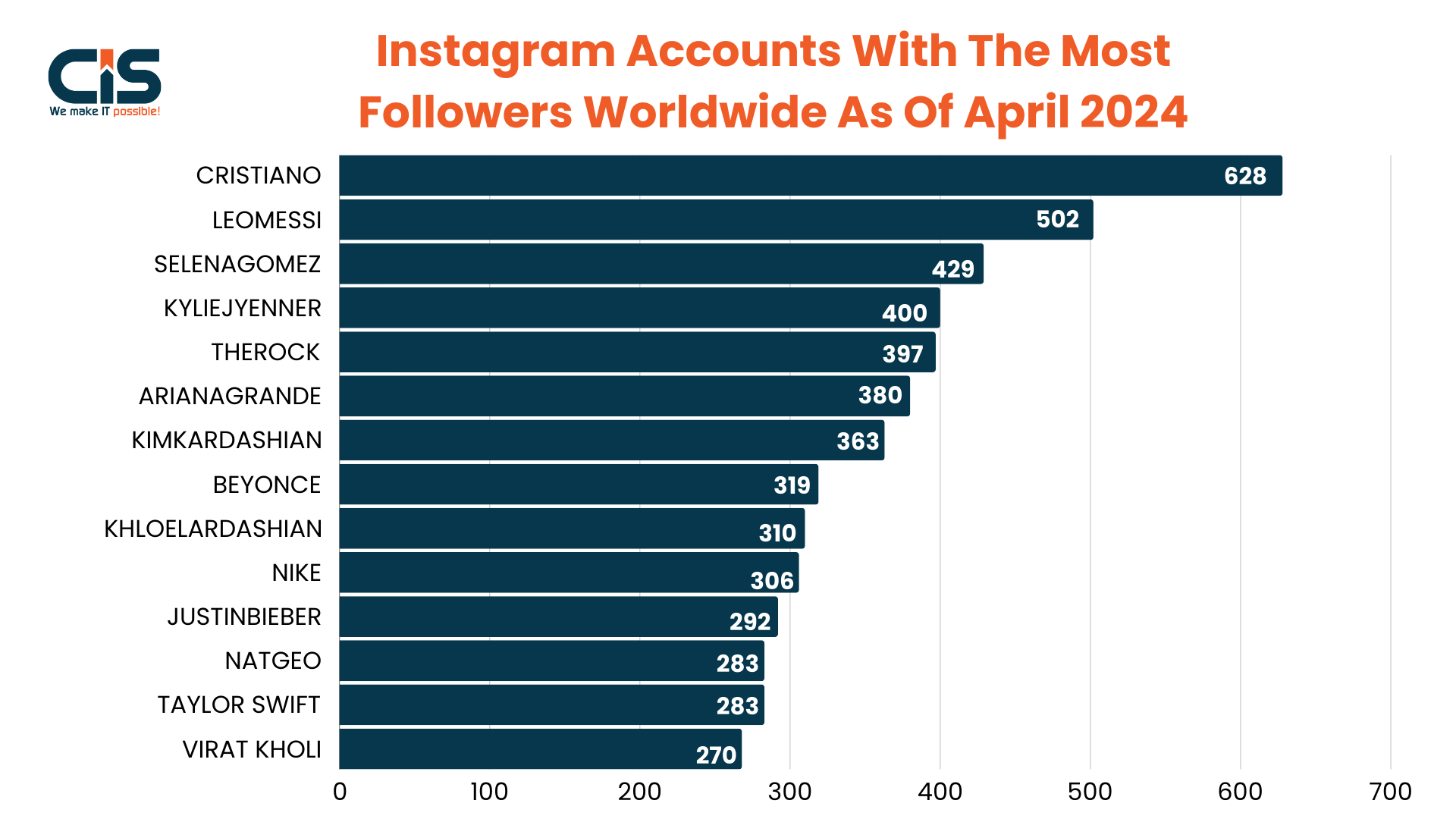
What is Instagram?
Instagram is a major social network with over one billion monthly active users in 2023. It started in 2010 as a simple photo-sharing app but has since evolved to include features like stories, IGTV, and reels. Users can take photos, record videos, add filters, and share their content with followers, making Instagram a platform focused on visual content.
Instagram's user base includes people of all ages worldwide, with the largest age groups being 18-29 years old (32.9%) and 30-49 years old (28.9%). It's particularly popular among younger users who prefer visual content over text-heavy social networks.
Instagram has also become an important tool for businesses. With 80% of users following at least one business profile, it's clear that the platform helps brands connect with consumers through high-quality visuals and active user engagement.
Importance of User-Generated Content
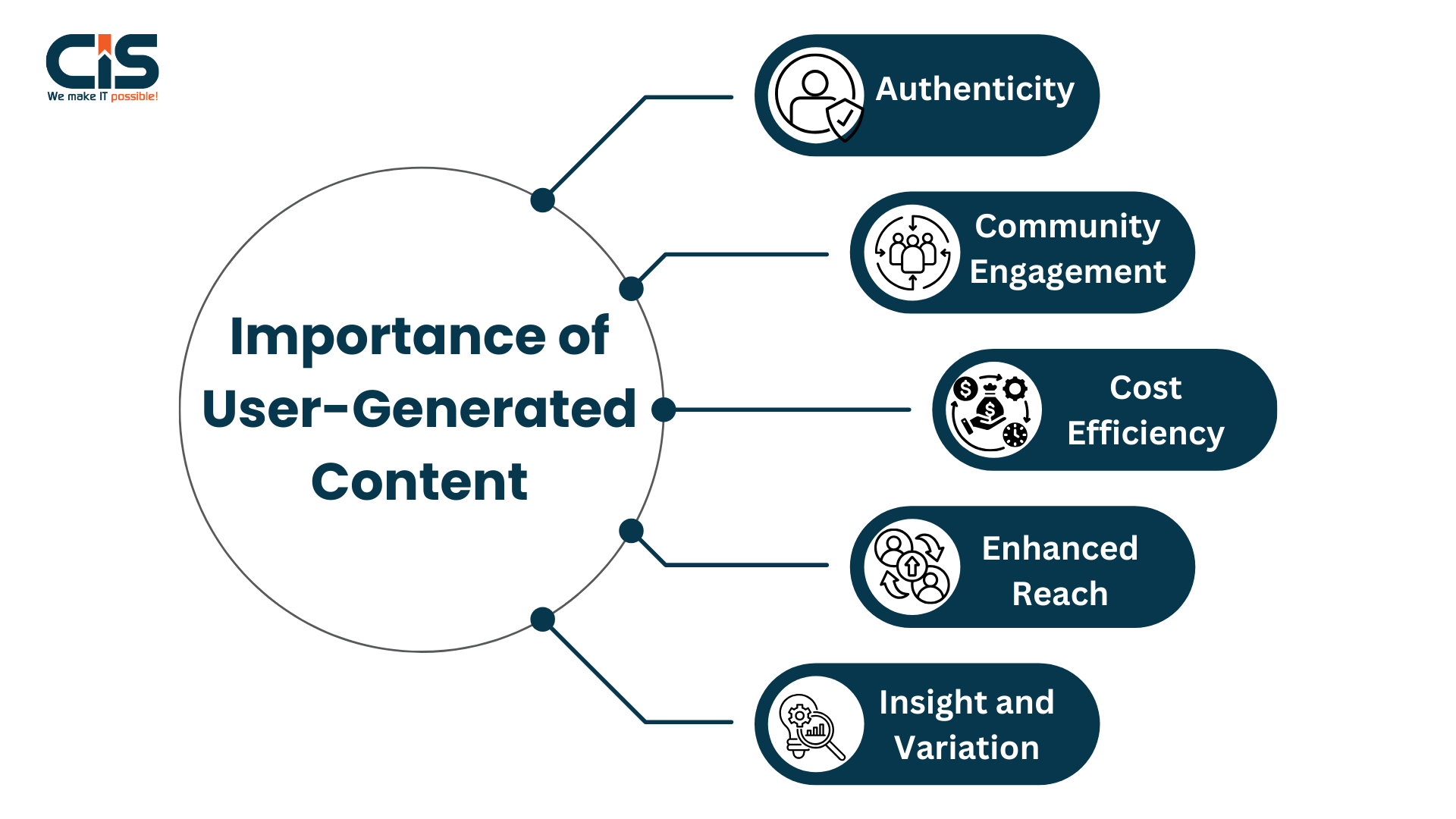
User-generated content (UGC) is a key factor behind Instagram's success. This means that users, not the app owners, create and share the content. Here's why UGC is so important for apps like Instagram:
- Authenticity: People trust content from other users more than ads from companies. When users see real people enjoying your app, they're more likely to engage with it.
- Community Engagement: When users share their experiences, it creates a sense of community. This feeling of belonging keeps users coming back, helping your app become a market leader.
- Cost Efficiency: UGC is a cost-effective way to market your Instagram-like app. Instead of spending a lot of money creating content, you can rely on your users to do it for you. This not only saves money but also boosts user engagement and trust.
- Enhanced Reach: When users share their content, it introduces your app to their followers, increasing visibility and attracting new users.
- Insight and Variation: UGC gives you a wide range of perspectives and experiences, providing insights into what users like and helping you improve your app.
Core Features of a Photo-Sharing Site
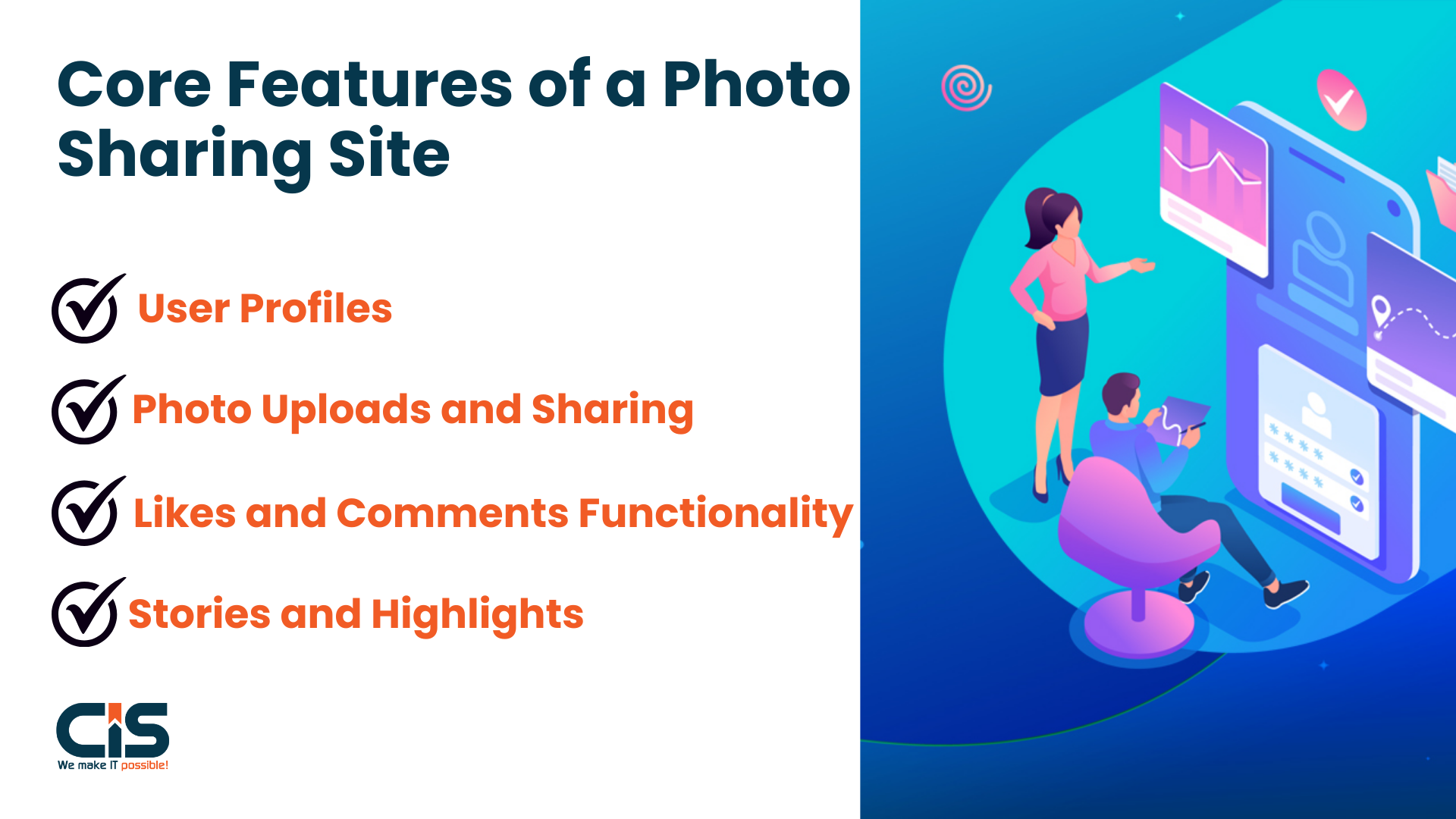
When creating an app like Instagram, it's important to focus on key features that attract and keep users engaged. By including and improving the following features, you can increase user retention and satisfaction.
- User Profiles
- Users need to create personal profiles where they can share photos, check activities, and connect with friends.
- These profiles should include fields for bios, profile pictures, and links to other social media profiles.
- A well-designed profile makes users want to spend more time on the app by offering a complete and integrated experience.
- Photo Uploads and Sharing
- Sharing photos is the main activity on a photo-sharing app, so this feature should be easy to use.
- Make sure users can upload photos in different formats and sizes and consider adding simple editing tools like cropping, rotating, and filters.
- Likes and Comments
- To encourage interaction, include features like liking and commenting on posts.
- These interactions help keep users engaged and connected with each other's content.
- Adding notifications for likes and comments can further increase user engagement and make the app more lively.
- Stories and Highlights
- Features like Instagram stories can greatly increase user engagement.
- Stories disappear after 24 hours, which makes them more exciting for users.
- Allow users to save their favorite stories in highlights, creating a gallery of their best moments.
Steps to Create An App Like Instagram
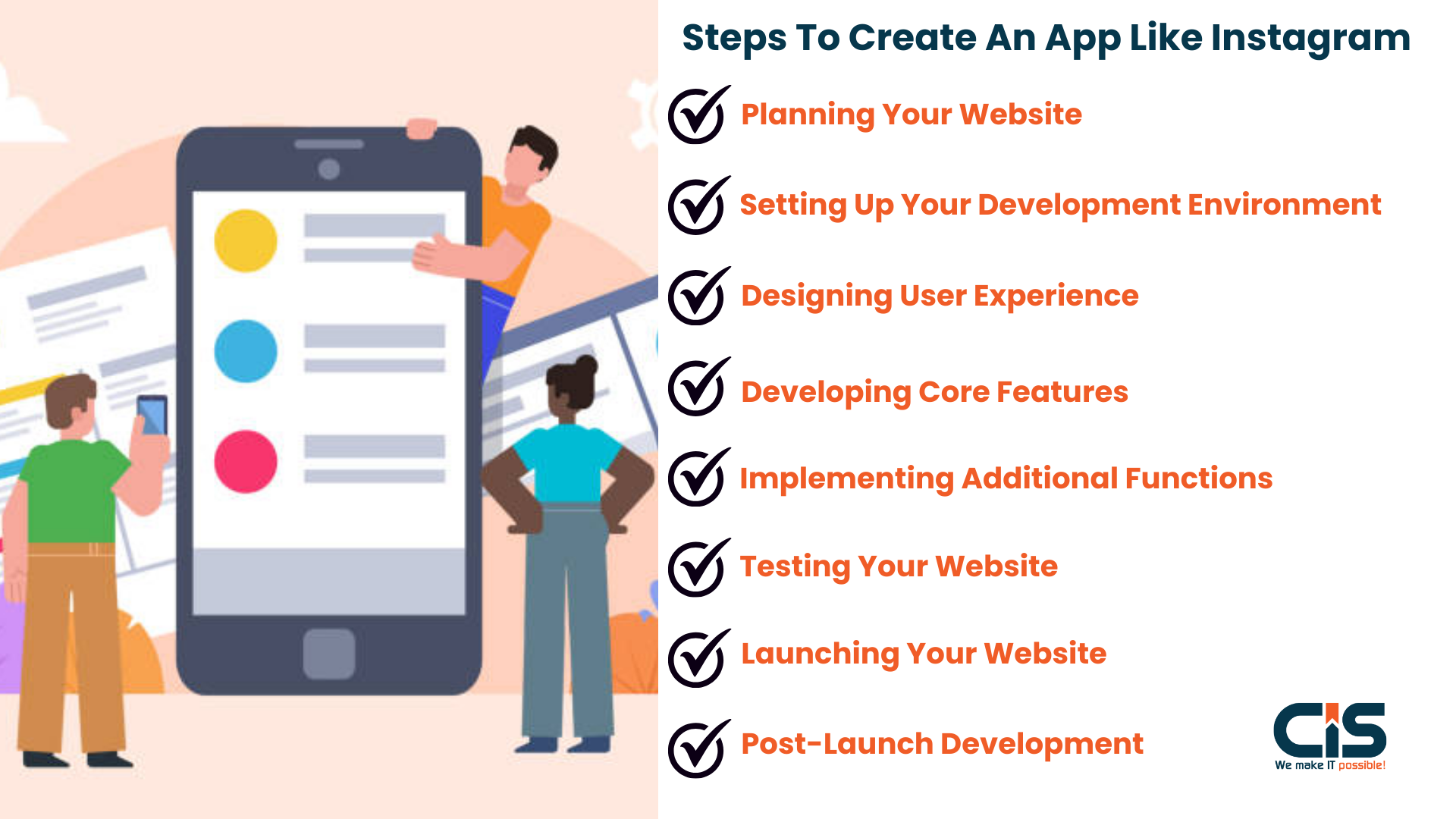
Step 1: Planning Your Website
To build a social media app like Instagram, it's essential to follow a strategic plan that integrates elegant design, strong user engagement, and smooth functionality. Industry statistics indicate that the global social media market is projected to reach $94 billion. This underscores the potential and importance of creating a compelling app experience similar to Instagram.
Defining Your Target Audience
The most important thing that has to be established for the users to have an efficient app design is to know the identities of the users when they are building an app like Instagram. Go through the World Wide Web and other relevant publications to determine which demographic is most involved in photo-sharing.
Are they teens who want to experiment with the current trends of filters or are they businesspersons who want to present their catalogs? Some of the major elements that will define your features or marketing strategies are identified by identifying the target market.
- Identifying Your Niche
The focus is mostly on photo sharing; the field is full of activity and competitively competitive, ensuring high focus. It is recommended in this situation to consider a particular interest or niche that one desires.
For instance, when deciding on the direction for your app, whether it focuses on travel, photography, culinary topics, or environmental issues, it's crucial to select a niche. Choosing the right niche can significantly impact the app's ability to attract a loyal user base and simplify the marketing strategy.
If you're considering how to build an app like Instagram, selecting a targeted niche is key to ensuring your app stands out and effectively reaches your audience.
- Understanding User Demographics
For those managing a substantial customer base, it's crucial to consider aspects related to the users' demographics, such as their age, geographical location, income and preferences.
Collecting qualitative data through methods like surveys and analyzing social network app activity can provide valuable insights. This information is essential for determining the features and functionalities of an app, moderating content and even tailoring advertisements. Understanding these aspects is key when aiming to build a social media app like Instagram.
Creating a Unique Value Proposition
To build a successful app like Instagram, it's crucial to clearly define your Unique Selling Proposition (USP), which highlights what sets your app apart from existing ones. Conduct a SWOT analysis on current applications to identify their weaknesses and areas where they fail to meet user needs.
Look for features or aspects that users may desire but are missing from these platforms. Ensure that your app's message and presentation effectively capture attention and persuade users to choose your mobile platform over others.
Building a Brand Identity
To effectively build an app like Instagram, it's crucial to understand that brand image goes beyond just the logo. Evaluating the outcome in this context reveals that all promotional materials must maintain a consistent tone, writing style and message.
For a social media app like Instagram, ensuring that the brand resonates with the target audience and reflects relevant characteristics is essential. A cohesive vision and relatable user experience significantly enhance the likelihood of building trust and encouraging user retention on the platform.
Step 2: Setting Up Your Development Environment
Choosing the Right Tech Stack
Building an app like Instagram requires a solid foundation in the development process. According to a survey among developers, 58.8% consider the tech stack the most critical factor for optimal and scalable app performance.
This highlights the importance of selecting the right frontend development and backend technologies for your project. To build a social media app like Instagram, it's essential to focus on the right tech stack to ensure your app performs well and scales effectively.
Frontend Technologies
For the User Interface of the application, we require HTML, CSS and JavaScript, which are the basic tools of web development. HTML is used to organize your app page, while CSS is used for the look and feel of your app. JavaScript, on the other hand, is used for interactivity, like frameworks such as React Native or Vue.Js can do this to improve the user experience even further in a primary photo-sharing application, as a responsive and smooth interface matters greatly.
Backend Frameworks
Analyzing the server side is crucial, and selecting the right framework is a significant decision. Popular choices include Node.js, with its fast execution capabilities, as well as languages such as JSP, JavaScript and Ajax.
Additionally, frameworks like Django, known for its excellent security measures and Rails are commonly considered. When planning to build an app like Instagram, these technologies play a pivotal role in shaping the application's performance and security.
Basically, Ruby on Rails is an excellent choice when it comes to the fast pace of the app development process. To build an app like Instagram, selecting robust backend frameworks is crucial for ensuring scalability, security and efficient data management.
The choice should be based on the expertise of your development team as well as the requirements of the app you plan to create.
Read Also: 5 Best Backend Programming Languages: Which One Will Boost Your Web Development ROI?
Database Selection
User data storage is a crucial aspect to consider when building an app like Instagram. To manage millions of photos and various user interactions efficiently, you'll need a robust database system.
Relational databases such as MySQL are well-suited for structured data, while document-based databases like MongoDB excel in handling unstructured data. Depending on your app's requirements, you should select the database that best supports performance and scalability for building a social media app like Instagram.
Importance of Scalability
Scalability becomes an increasingly important consideration as your user base grows. Choosing a tech stack that allows for future growth without necessitating major technology changes is essential. Platforms like AWS or Google Cloud offer infrastructure that can efficiently scale your app if it gains popularity.
Therefore, planning for growth from the start can significantly reduce both the time and cost involved in scaling. This approach is particularly important when you aim to build an app like Instagram, ensuring that the underlying technology supports expansion seamlessly.
Step 3: Designing User Experience (UX)
Crafting Intuitive User Interfaces (UI)
When deciding on the concept for an application like Instagram, prioritizing the user's experience is crucial. Research by Forrester shows that a well-designed user interface can potentially double hourly conversion rates.
This underscores the importance of creating uniquely convenient and visually appealing interfaces that keep users continually engaged with your app. Building an app like Instagram involves focusing on these key elements to ensure long-term user retention and satisfaction.
Wireframing and Prototyping
Before diving into full-scale development, wireframing and prototyping are essential steps in the design process. Wireframes provide a blueprint for your app, helping you visualize the layout, key features and navigation flow.
Prototypes and wireframes can be made with the use of programs like Figma, Adobe XD, or Sketch. This iterative process allows you to test ideas and gather feedback from users, ensuring your design is user-centered.
Responsive Design for Mobile Users
Given that over 95% of Instagram users access the platform via mobile devices, responsive design is non-negotiable. Your app should adapt seamlessly to various screen sizes and orientations. By leveraging frameworks like Bootstrap or CSS Grid, you can ensure a consistent experience across devices. This flexibility improves user retention and happiness.
Ensuring Accessibility
When you create an app like Instagram, it's essential to prioritize accessibility to ensure that all users, including those with disabilities, can effectively use your platform. Adhering to Web Content Accessibility Guidelines (WCAG) is crucial in designing accessible interfaces.
According to Statista, Men between the ages of 18 and 24 made up about 16.5% of the world's active Instagram user base as of April 2024. The majority of Instagram users globally were 34 years of age or younger.
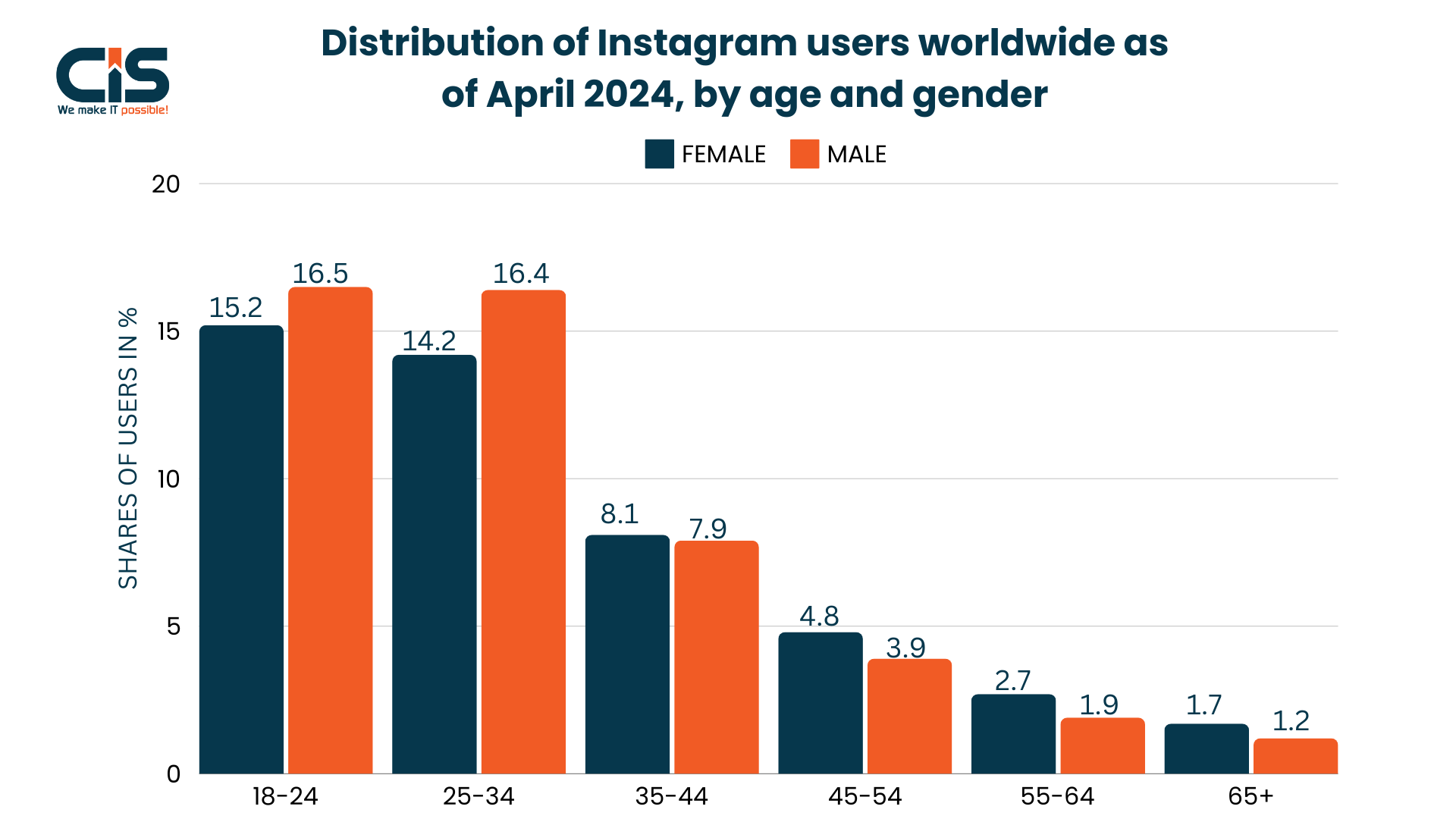
This includes implementing features like text alternatives for images, enabling keyboard navigation and ensuring sufficient color contrast. By focusing on accessibility, you broaden your app's reach and create a more inclusive user base.
Importance of Inclusivity in Design
Inclusivity in design goes beyond mere compliance, it fosters a sense of belonging and community among users. By considering the diverse needs of your audience, you can create a more welcoming environment.
Research shows that inclusive designs lead to increased user adoption and loyalty, proving the value of taking diverse perspectives into business account during the design process.
Step 4: Developing Core Features
When creating an app like Instagram, it's vital to focus on developing the core features that contribute to its success. Research highlights that users are more inclined to engage with apps offering seamless functionality and a comprehensive set of essential features. Here's a breakdown of the critical components necessary to build an app like Instagram.
User Registration and Authentication
Security is paramount. Studies show that 60% of users abandon apps after one bad experience with login. Implement secure signup and login procedures using OAuth or similar protocols to protect user information.
Ensure that users can register easily using email, phone numbers, or social media accounts. A simple, straightforward authentication process will enhance user experience and retention.
User Profile Management
Once users are onboard, enable them to create and manage their profiles effortlessly. This includes options for profile customization, such as adding a bio, profile picture, and links to other social accounts. Allowing users to update their profiles easily encourages them to interact more with the app when you build a social network app like Instagram.
Photo Upload and Sharing Mechanism
The essence of your app will rely on efficient photo upload and video sharing app mechanisms. Offer smooth file upload functionality that supports various formats and sizes. Optimization is key, users should be able to upload photos quickly without frustrating delays.
Incorporate image editing tools, such as filters and cropping options, so users can enhance their images before sharing.
Integrating Social Interactivity
To create a vibrant community, integrating social interactivity is crucial. Implement features that allow users to like, comment on and share posts. Statistics reveal that users are 50% more likely to engage with content that encourages interaction.
Also, include following and follower systems to foster connections, enabling users to curate their own feeds and discover new content.
Step 5: Implementing Additional Functions
To enhance the user experience of your app, such as Instagram, it's essential to implement additional functions that keep users engaged and promote interaction. According to a study, 70% of users cite convenience and ease of use as key factors that influence their app choices. Here's how to incorporate these functions into your app:
Search Functionality
It has been established that users abandon their searches when they do not find relevant items from the chosen sources. The individuals should easily locate other people and their profiles, unique hashtags, and particular posts.
A well-structured search engine should be coupled with the functionality of sorting through the results by their popularity and recency. The study also revealed that the use of the naturalistic search interface could boost the active user's interaction by up to 35%.
- Exploring and Discovering Content
Thus, the encouragement of discovery increases the level of enjoyment of using the app. Implement the Explore tab containing posts that are popular right now, users who just joined and posts that you might like.
Recommended feeds should be based on algorithms to generate lists of events that are interesting to the users based on their activities and preferences. Exploring, it is shown that users are 40% more likely to check an Explore section when the latter will contain recommendations based on this user.
- Algorithm for Content Recommendations
An efficient solution would involve the use of superior algorithms with content recommendations and this can go a long way in enhancing the user rates as well as user engagement. Algorithmic curation, based on likes, follows, shares and other actions of a site's or app's users, recommends content that is relevant to them.
It has been noted in various studies that when recommendations are made by the system depending on the users' preference, then users are likely to be satisfied and engaged more.
Real-Time Notifications
Another consideration from a consumer perspective is the provision of updates on activity on the users' accounts. Introduce notification features that will enable the users to be informed when they have been liked, commented on or have gained new followers.
This feature makes the user come back to the app as well as continue consuming content in a short time. It is a real boost of 25% of the probability that the user will return to the application/response.
- Push Notifications for User Engagement
By posting direct messages to users' screens, push notifications remain one of the most effective ways to retain an audience. Employ them to notify users regarding new feeds/updates from the following accounts, important events, or updates on the application. C3 notifications should not be too frequent and should not congest the user to the extent of deactivating it. According to available data, it is a fact that readers' individual message invitations may raise the level of their activity to 20%.
- In-App Messaging Systems
Adding an in-app direct messaging feature can elevate the social aspect of your app purchases. This functionality allows users to communicate directly, share content and build relationships within the platform. Research indicates that social connections increase overall user activity, making this a valuable addition when you build a social network app like Instagram.
Step 6: Testing Your Website
Importance of Quality Assurance
Quality assurance (QA) plays a critical role in app development costs. According to industry statistics, 90% of users will abandon an app after a bad experience. Therefore, thorough testing is essential to ensure your app is free from bugs and operates smoothly.
- Testing User Flows and Functionalities
Start by testing the user flows and functionalities to ensure that every feature works as intended. Focus on core processes like account creation, posting content, and navigating through the app. Run tests to identify any roadblocks or confusing steps that could hinder the user experience.
- Mobile Compatibility Testing
With over 70% of social media users accessing platforms via mobile devices, it's essential to ensure your app functions seamlessly across various devices and operating systems. To build an app like Instagram, perform mobile compatibility testing to guarantee that your social network app like Instagram delivers a consistent experience, whether on Android or iOS.
Gathering User Feedback
Once testing is underway, don't underestimate the value of user feedback. Conduct surveys or interviews with test users to gather insights into their experiences. Ask specific questions about basic features, design, and usability. This data is invaluable for understanding your target audience and refining your app.
- Beta Testing with Initial Users
Launch a beta version of your app to a small group of initial users. This will provide real-world usage data and highlight any unforeseen issues. Monitor how users interact with the app and collect their feedback systematically.
Encouraging beta testers to report bugs or suggest improvements can lead to a more polished final product. This process is crucial when you build a social media app like Instagram.
- Iterating Based on Feedback
After gathering feedback from both testing and beta users, make necessary iterations to your app. This may involve fixing bugs, improving features or even changing design elements based on user suggestions. Continuous improvement is vital to keep users engaged and satisfied.
Read More: Recent Software Testing Trends: What's the Cost, Gain, and Impact?
Step 7: Launching Your Website
Launching your app is a pivotal moment in your development journey. This stage requires finalizing all preparations, ensuring the app's functionality and executing well-planned marketing strategies.
Preparing for Launch
Before you go live, take the development time to run comprehensive tests on your app. Ensure that all additional features are working as intended and fix any bugs or glitches that may disrupt user experience. It's essential to refine your app by collecting feedback from beta testers. This feedback will help you make informed adjustments.
- Final Checks Before Going Live
Conduct thorough checks on the following:
- Compatibility: Ensure your app works seamlessly across different devices and operating systems (iOS and Android).
- User Experience: Confirm that your app's interface is intuitive and user-friendly.
- Performance Testing: Assess loading times, responsiveness and overall performance under varying loads.
- Compliance: Make sure your app adheres to app store guidelines, privacy laws and any other relevant regulations.
- Setting Up Website Analytics
To build a social network app like Instagram, integrate analytics tools such as Google Analytics or Firebase to monitor user interaction and app performance. Set up tracking for key performance indicators (KPIs) like user downloads, daily users, active users and session duration. This data will guide your future updates and marketing strategies.
Marketing Your Platform
Once your app is ready, it's time to unveil it to the world. A well-planned marketing strategy is vital for success.
- Social Media Strategies
Leverage social media platforms to generate buzz and create engaging content that highlights your app's extra features. Run promotional campaigns and consider utilizing paid advertisements to reach a broader audience. If you're looking to build an app like Instagram, showcasing these unique features will be crucial in differentiating your app from competitors.
- Influencer Partnerships and Promotions
Collaborate with influencers whose audiences align with your app. These partnerships can help amplify your reach and build credibility. Influencers can create content showcasing your app, engaging their followers, and driving downloads.
Step 8: Post-Launch Development
Regular Updates and Maintenance
Once your app is live, the work has just begun. Recent statistics reveal that 21% of smartphone users uninstall an app after just one use if it fails to meet their expectations. This makes regular updates and maintenance essential for retaining users.
When you build a social network app like Instagram, it's crucial to monitor app performance, address bugs and introduce new features based on user feedback. This proactive approach can greatly enhance user satisfaction and loyalty, keeping your app relevant in a constantly changing market.
- Importance of Continuous Improvement
Continuous improvement is key to long-term success in the app industry. As technology advances and user preferences shift, it's important to keep your app updated. Regularly assess performance metrics and user reviews and gather feedback through surveys.
Implement changes that not only fix issues but also add value to the user experience. For instance, introducing new editing tools or enhancing the way users interact with content can keep your app fresh and engaging.
- Keeping Up with User Demands and Technological Advancements
To build an app like Instagram, staying ahead of trends in technology and user behavior is crucial. Incorporate features that align with current trends, such as augmented reality filters or video ad storytelling options. Keep up with industry standards and anticipate users' expectations for smoother, more intuitive interfaces. Leveraging cutting-edge technologies like AI can facilitate personalized experiences, which have become a significant expectation among users.
Managing User Engagement
User engagement is vital for the success of your app. Implement community management strategies that foster a positive environment. Encourage users to share creative content, participate in challenges, or engage with each other's posts. A strong community can create a sense of belonging among users, which increases their likelihood of returning to the app.
Analyzing User Behavior for Better Engagement
Utilize analytics tools to track user behavior within the app. Understanding how users interact with different features can provide insights into what works and what doesn't. Focus on metrics like session length, most-used features and user retention rates.
Make educated judgments regarding upcoming updates and improvements by using this data. Tailoring your app to meet the specific desires of your user base can lead to higher engagement rates and increased user loyalty.
Cost to build an app like Instagram.
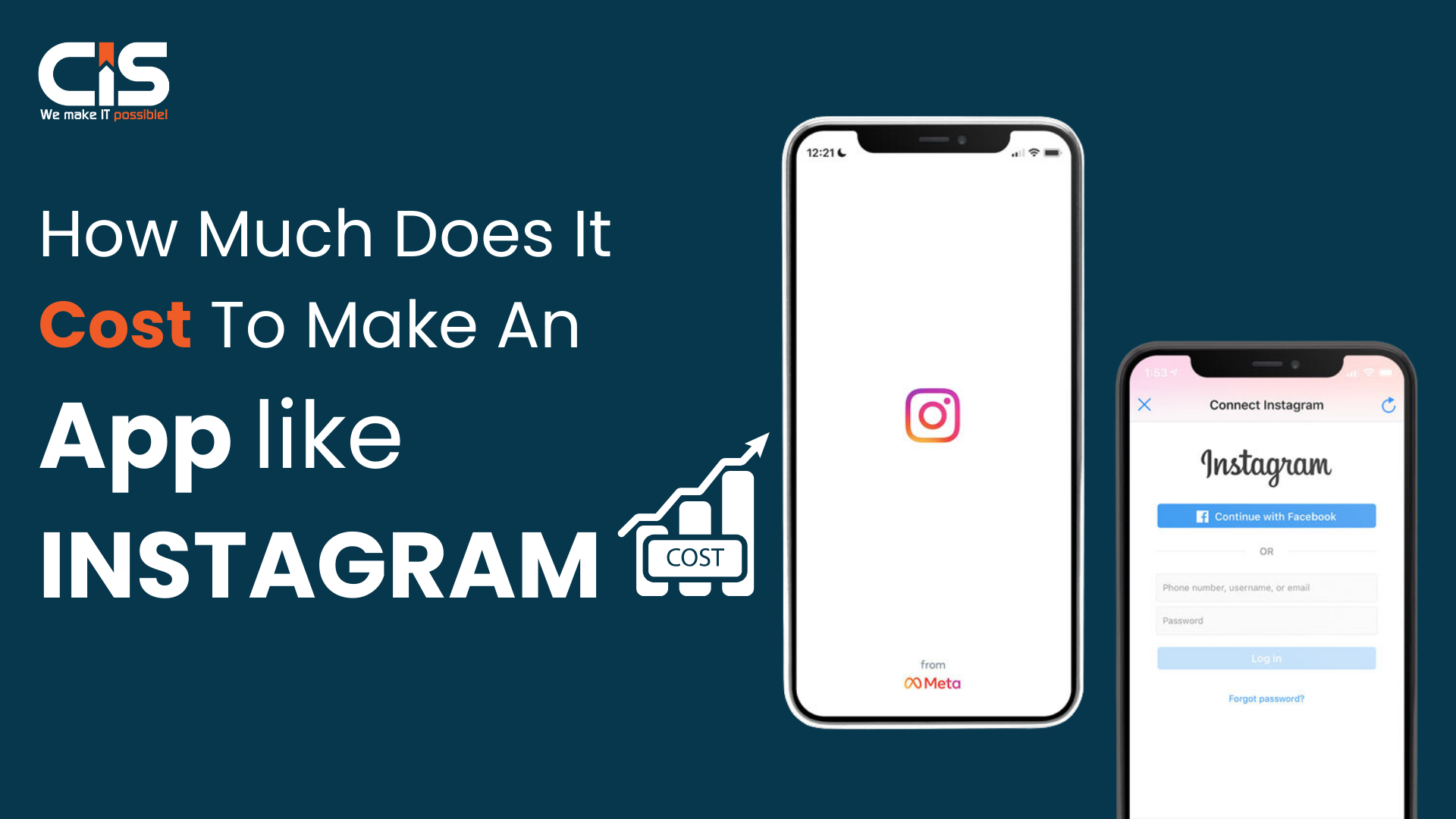
Developing a social media app like Instagram requires careful consideration of various costs that can vary depending on features, design and the chosen technology stack. Recent industry data indicates that the cost to create an app like Instagram typically ranges between $50,000 and $300,000, though some projects may exceed this range due to their complexity.
Factors Affecting Development Costs
- Design Complexity
Costs can start at around $10,000, while more intricate layouts can push costs to $50,000 or higher.
- Core Features
Implementing each feature can cost between $5,000 and $50,000. Advanced features may lead to higher expenses.
- Platform Choice
Developing a platform can lead to costs ranging from $100,000 to $300,000. The cross-platform development phase may offer some savings.
- Development Team Location
Labor costs may range from $150 to $250 per hour in North America to $20 to $50 per hour in Eastern Europe or Asia.
- Post-Launch Maintenance
Ongoing maintenance typically averages around 15-20% of the initial development cost annually.
Conclusion
Creating an app like Instagram involves a multifaceted approach that combines innovative design, advanced technology and a deep understanding of user behavior. By following the steps outlined, hiring a professional mobile app development company, defining your niche, developing a user-friendly interface and implementing robust backend solutions ,you are well on your way to building a compelling platform.
However, the journey doesn't end at launch; continuous improvement is essential for maintaining relevance in a competitive market. By staying attuned to user feedback and industry trends, you can implement updates that enrich the user experience and encourage engagement as you build an app like Instagram.
With 362 million Instagram users as of January 2024, India has the biggest Instagram viewership globally. There were 169 million users in the U.S. and 134 million in Brazil. Japan, Indonesia, and Turkey came in fourth, fifth, and sixth place, respectively.
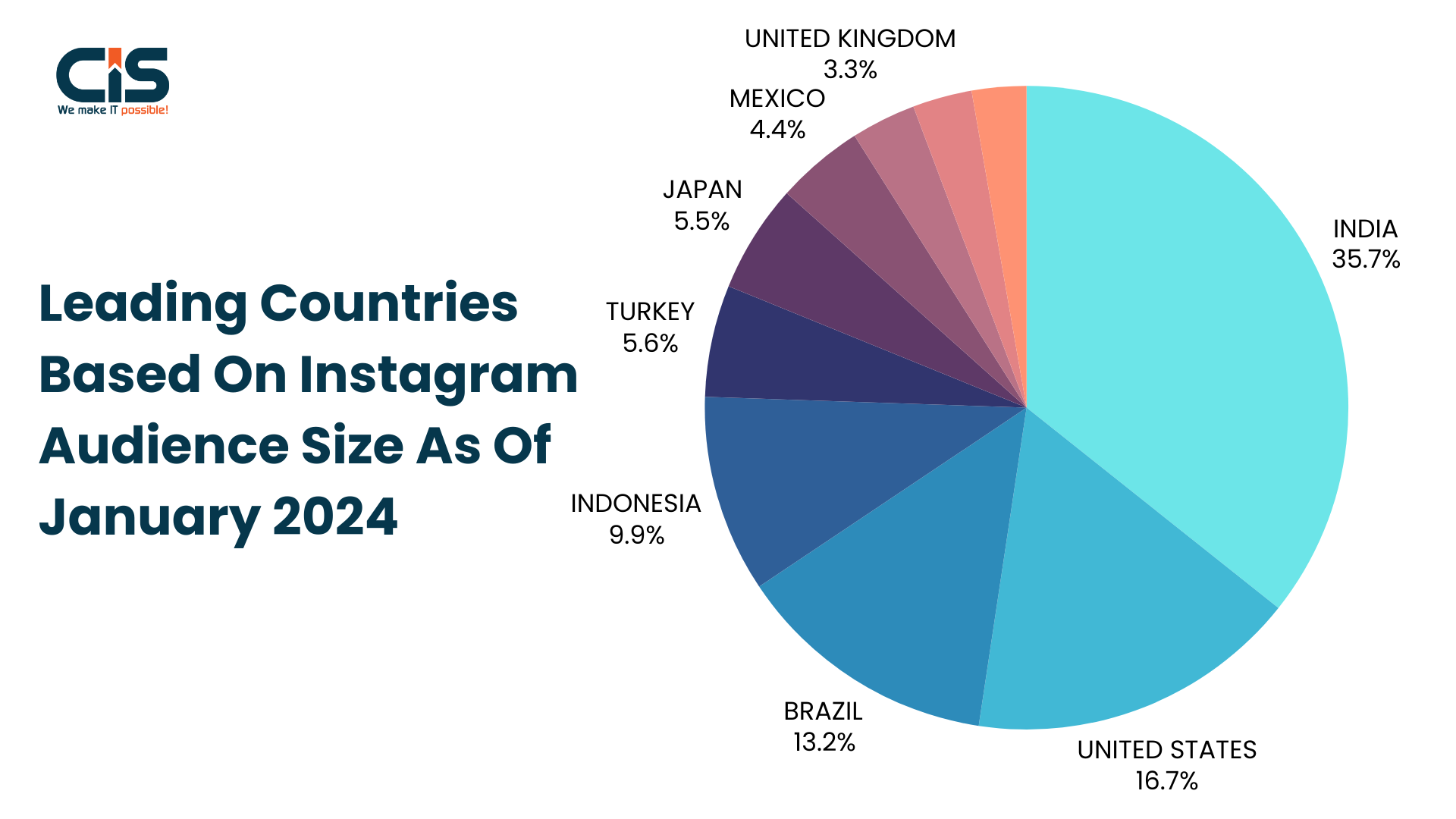
Moreover, leveraging analytics tools provides insights into user behavior, enabling you to tailor your app more effectively to their needs when you build a social network app like Instagram. Remember, community management and fostering user engagement are crucial components that drive retention and loyalty in the process of making an app like Instagram.
Ready to take the first step toward creating your own successful social media networks? Let our marketing team at CISIN guide you through the development process and provide you with expert insights tailored to your vision.





